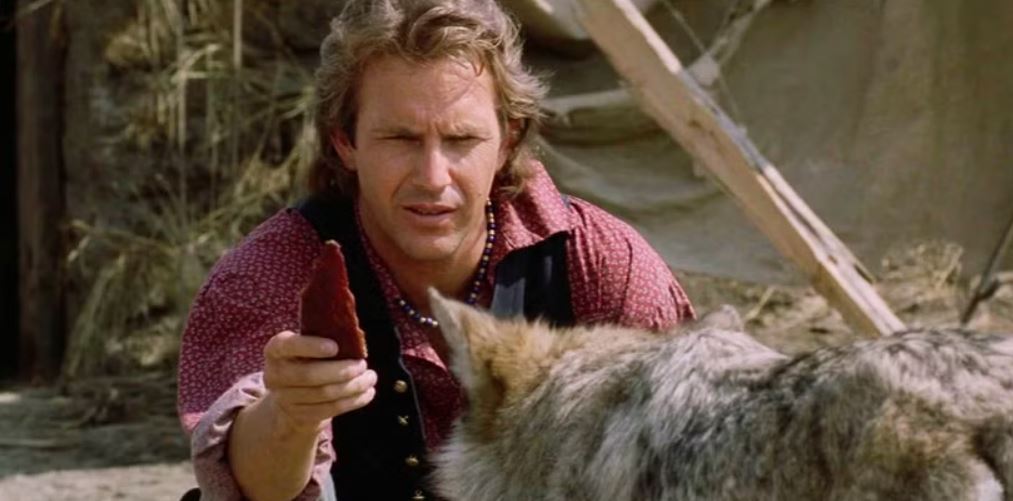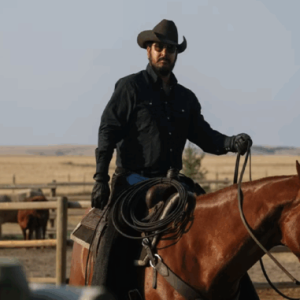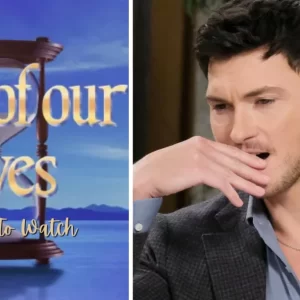Everyone told Kevin Costner he was getting too close to the sun in 1990. His directorial debut, Dances With Wolves, dubbed “Kevin’s Gate” by the press (a reference to the notorious flop, Heaven’s Gate, that became shorthand for cinematic
folly), was destined to fall flat on its face. The heedless ambition of an actor associated with sports films making the leap to director provided endless material for the media. Yet, to the most triumphant degree, Costner proved all the doubters
wrong, as the film became a box office sensation, critical darling, and winner of Best Picture and Best Director at the Academy Awards. What should’ve marked the beginning of the next Clint Eastwood or Robert Redford, a beloved movie star
who could moonlight as an auteur filmmaker, amounted to wasted potential. Despite his equally ambitious efforts, Costner, 34 years later, is still chasing after the beauty and magic of his first swing behind the camera.
Kevin Costner Used His Star Power To Revive the Western Against All Odds
In retrospect, Kevin Costner accruing enough cachet to direct a Western epic after only a few years of being a viable leading man in Hollywood is impressive. While he’s such an established name today, before Dances With Wolves, he had only been a major leading man for roughly three years, starting with The Untouchables and continuing with Bull Durham and Field of Dreams. Costner may have brought down Al Capone’s empire and built a mythical baseball field, but he couldn’t revive the Western, a fallow genre at the time, or so they said. While things quickly changed, Costner knew what audiences wanted all along.

Dances With Wolves, based on the novel by Michael Blake (who adapted his own book for the screen), follows John Dunbar (Costner), a Union army lieutenant during the Civil War who is assigned to a remote outpost, where he finds himself engaging with a neighboring Sioux settlement. Dunbar befriends the tribe and adopts their culture and practices, even becoming romantically involved with a white woman raised by the Native American tribe, Stands With a Fist (Mary McDonnell). They form an alliance when the Union army vows to take over the Sioux-owned land. The white savior complex of Dances With Wolves does considerably age it, as contemporary audiences are far more hesitant to embrace movies of its ilk. Compared to the genre of interlopers taking over foreign territory, Costner’s film shows substantial nuance, aided by the casting of real Indigenous people to play the Sioux tribe members, with the stand-out star being Graham Greene as Kicking Bird. While patronizing at times, the Dunbar character is highly deferential to the native tribe, and Costner is unafraid to present himself struggling to acquaint himself with unfamiliar territory.
Kevin Costner’s Films Fail To Achieve the Triumph of ‘Dances With Wolves’
After his lofty directorial debut grossed over $424 million worldwide at the box office, Kevin Costner was never to be doubted again. Costner let the anticipation for his follow-up as director accumulate as he stayed in front of the camera for the time being, starring in critical and commercial hits like Robin Hood: Prince of Thieves, JFK, and The Bodyguard. Although his frequent collaborator and on-and-off friend Kevin Reynolds would direct Waterworld, the dystopian action epic would be billed as Costner’s true follow-up to Dances With Wolves, not just relating to its content but because of its seemingly disastrous fate. Once again, the press was lampooning the over-budget and lengthy production of the film, but this time, it was the media who had the last laugh. From reports of Reynolds’ disgruntled departure from the film’s production and other creative differences, it’s presumed that Costner ghost-directed Waterworld, which became canonized as a shorthand for a cinematic flop, along with Heaven’s Gate and Ishtar.
Since Dances With Wolves, Costner only has three directing credits to his name, with three more potentially waiting in the wings. The fiasco in Waterworld didn’t shy Costner away from directing yet another bloated, expensive dystopian epic in The Postman. Where Waterworld has its retroactive defenders, The Postman, which grossed $20 million against an $80 million budget, remains widely despised for its meandering plot, dull pacing, and wooden performance by Costner. Because he shot for the sun and hit his target in 1990, Costner believed he was untouchable throughout the 90s. If he wanted to restore his popularity and commercial viability, he needed to streamline his vision. Open Range, Costner’s 2003 film, was not a grandiose American epic, but rather, something akin to a ’50s Howard Hawks or Anthony Mann Western adapted from a dimestore novel. To put it in familiar Costner terminology, he swung for a double rather than a home run, but he got on base nonetheless, as Open Range was critically acclaimed and a modest hit.
The Success of ‘Dances With Wolves’ Clouded Kevin Costner’s Judgment

Kevin Costner has always been unapologetically pastiche and old-school, evident by his earnest affection for baseball and the Old West. Dances With Wolves looms over Costner’s career because he keeps trying to chase after the triumphant success of his Best Picture winner, a triumph that silenced all the naysayers. After revitalizing his stardom on television with Yellowstone, Costner took the biggest gamble yet with Horizon, a self-financed, theatrical-released four-part epic American saga. Costner, who specializes in throwback-style movies, became a forward-thinking maverick with Horizon, as the actor-director was adamant that this is what audiences wanted to see on the big screen. Unfortunately, for fans of Costner and singular creative independence, the doubters won again, as Chapter 1 of Horizon left little to no dent at the box office in the summer of 2024, causing Chapter 2 to be pulled from its August release. The release of the remaining three chapters remains in limbo, although Chapter 2 premiered at the Venice Film Festival.
Kevin Costner’s career trajectory is perceptible in his filmography, a storied career consisting of multiple career apexes and nadirs. However, no point in his career defined Costner’s legacy in cinema more than defying all the odds with Dances With Wolves. Following controversially winning Best Picture and Best Director over Goodfellas and Martin Scorsese, Costner’s directorial career evoked the work of an unfettered egoism. Waterworld and The Postman are remarkably retrograde epics with little aspirations behind propping up their glamorous movie star. As much as Costner vows to subvert industry expectations by reviving dormant genres, his films are noticeably stuck in the past. This may have worked for Dances With Wolves, but by the time The Postman hit theaters in 1997, people were tired of Costner’s mawkish, all-American affectation.Horizon had the potential for a late-period reflection of life in his older age, but it seemed comfortable recycling tropes more suited to an episode of Yellowstone.
To be fair, Kevin Costner has made concentrated efforts to suppress his overpowering stardom in the service of his films. In Open Range, his most successful film on a creative level, Costner concedes his leading man powers to Robert Duvall, who gives a beautifully understated performance. To the dismay of the Yellowstone audience trekking to theaters to watch Costner on the big screen, he doesn’t appear until over an hour into Horizon, and the deep ensemble cast carries the first quarter of the Western saga. While it’s impossible to manufacture this circumstance, Dances With Wolves worked because Costner had something to prove. If it meant he had to request the assistance of Kevin Reynolds to shoot the buffalo chase scene, he was going to show the world that Westerns mattered. Perhaps out of sheer stubbornness, or because he doesn’t know how to direct any other genre, Costner continues to resort to these grand-scale Westerns, even if mainstream audiences are disinterested.





